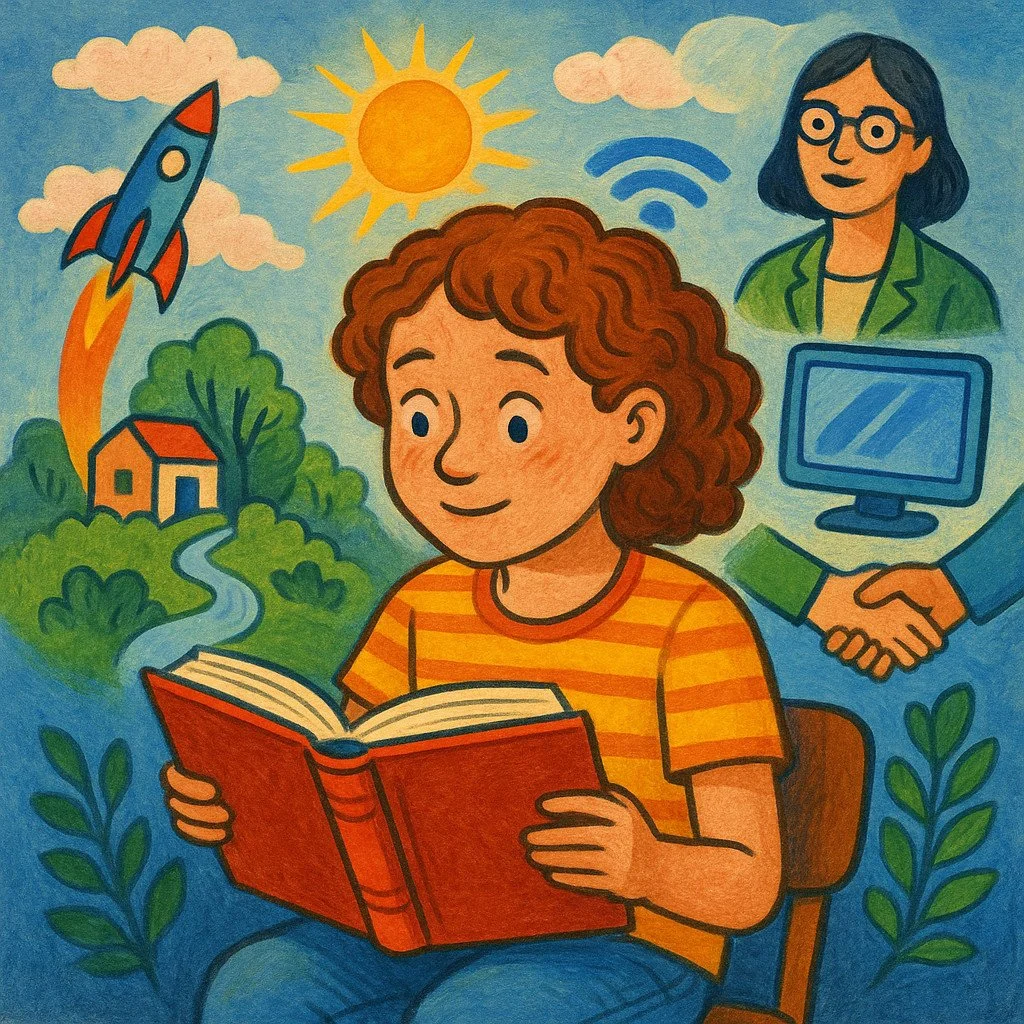From Page to Possibility: How Edufiction Helps Teens Imagine a Brighter Future
Edufiction isn’t just about telling stories. It’s about creating bridges—linking young readers to the skills, mindsets, and hope they need to approach the future with confidence.
For many teens today, the future feels daunting. The rapid pace of technology, the realities of climate change, and uncertainty around careers can create a heavy sense of anxiety. Edufiction offers an antidote—not by avoiding these challenges, but by showing characters who face them with courage, creativity, and resilience.
Through carefully woven narratives, edufiction provides preparation, inspiration, and reassurance.
Why Edufiction Calms Future Anxiety
When young readers follow a character navigating uncertainty—whether it’s a cyber threat, a community problem, or a personal setback—they witness problem-solving in action. They see mistakes made, lessons learned, and confidence gained.
The message is absorbed naturally through the story rather than through direct instruction. This works because:
It builds emotional safety – Fiction provides a safe space to explore “what if” scenarios.
It normalises growth – Characters often start from a place of uncertainty, making their progress relatable.
It shows many possible futures – Stories offer multiple positive outcomes, reducing the pressure to find a single “right” path.
Examples Across Edufiction Genres
1. Digital Age Navigators (Cyber Secrets - A digitalcitizenship adventure story by Casper Pieters)
In works like Cyber Secrets, characters face dilemmas about privacy, online friendships, and misinformation. They make mistakes, recover, and learn—demonstrating that digital challenges can be tackled with skill and integrity.
2. Climate & Environmental Futures (The Last Wild by Piers Torday)
This eco-fiction adventure follows a boy determined to save the last remaining animals in a world where wildlife has nearly disappeared. It offers hope and agency to readers concerned about environmental issues.
3. STEM & Innovation Stories (Ada Lovelace Cracks the Code by Rebel Girls)
Blending biography with narrative, books like this present innovators as relatable, flawed humans, inspiring readers to believe their own ideas could make a real difference.
4. Social Justice Journeys (Refugee by Alan Gratz)
Through three interwoven stories of young people fleeing danger, readers see how courage and action can change the course of a life—even in turbulent times.
From Story to Self-Belief
Edufiction builds reassurance by guiding readers through challenges alongside relatable characters.
When a teen reads about a character setting boundaries with technology or working collaboratively to solve a crisis, they see their own potential reflected. The fictional journey plants seeds of confidence and agency in the reader’s mind.
Practical Tips for Educators and Parents
Edufiction can be an ideal springboard for meaningful discussion:
Ask after a key scene: What would you do in this situation?
Invite students to imagine the characters’ lives five years later.
Pair stories with relevant skills: adjust privacy settings after a digital citizenship chapter, or plan a community project after a climate-action narrative.
Why This Matters Now
Anxiety grows in the face of uncertainty. Edufiction offers young people a safe rehearsal space for life, allowing them to see—again and again—that their futures are not something that just happens to them. They are something they can shape.
If a hopeful future can be imagined in a story, it becomes easier to create in reality.

